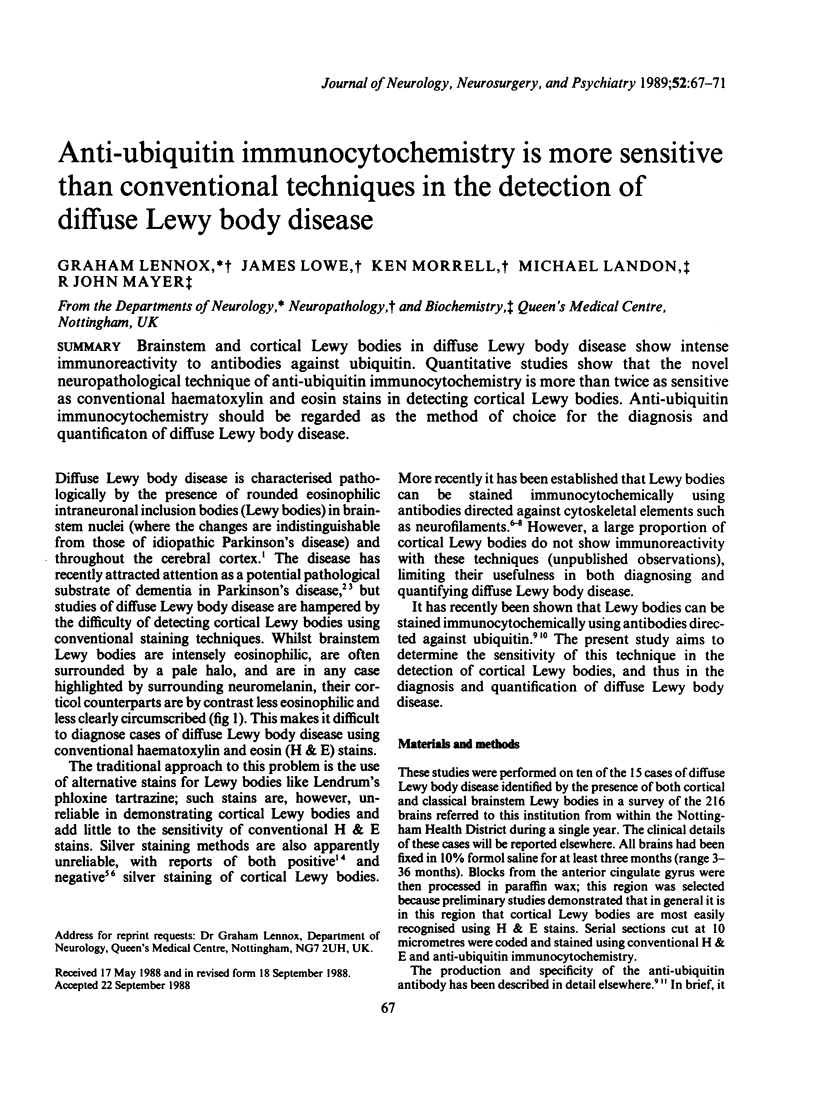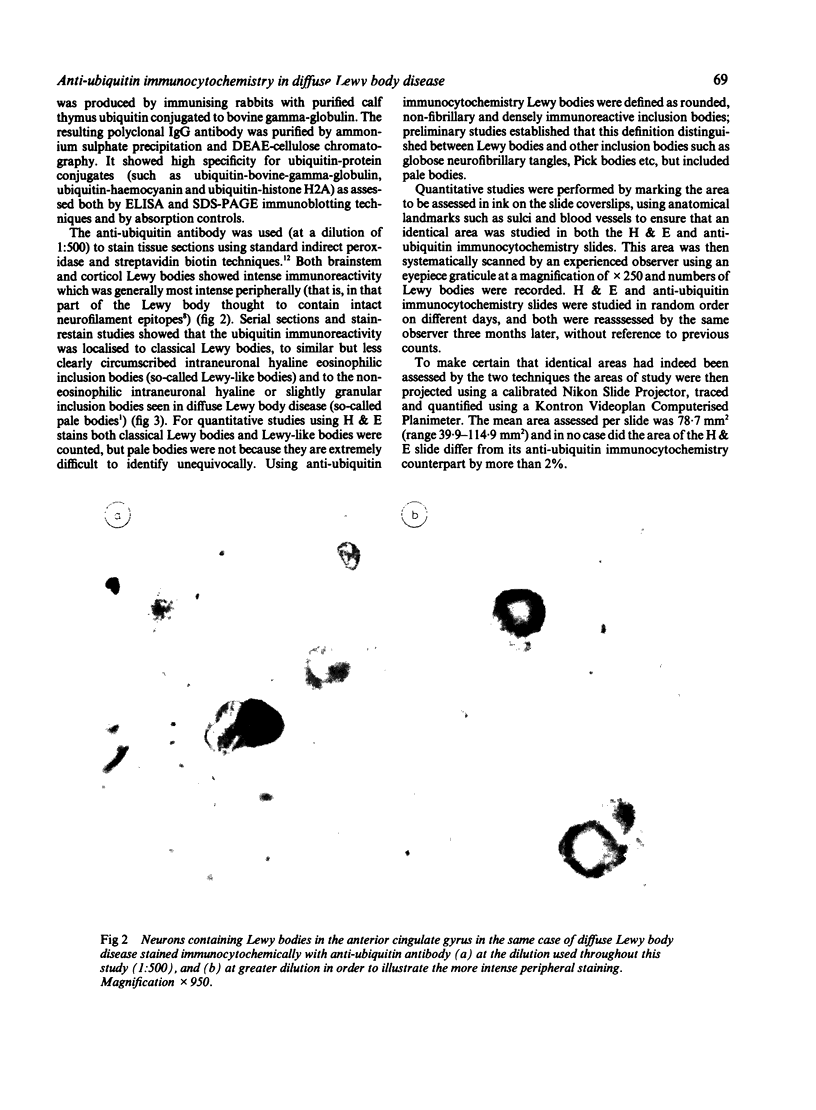Abstract
Brainstem and cortical Lewy bodies in diffuse Lewy body disease show intense immunoreactivity to antibodies against ubiquitin. Quantitative studies show that the novel neuropathological technique of anti-ubiquitin immunocytochemistry is more than twice as sensitive as conventional haematoxylin and eosin stains in detecting cortical Lewy bodies. Anti-ubiquitin immunocytochemistry should be regarded as the method of choice for the diagnosis and quantification of diffuse Lewy body disease.
Full text
PDF




Images in this article
Selected References
These references are in PubMed. This may not be the complete list of references from this article.
- Beppu H., Nagaoka M., Tanaka R. Analysis of cerebellar motor disorders by visually-guided elbow tracking movement. 2. Contribution of the visual cues on slow ramp pursuit. Brain. 1987 Feb;110(Pt 1):1–18. doi: 10.1093/brain/110.1.1. [DOI] [PubMed] [Google Scholar]
- Byrne E. J., Lowe J., Godwin-Austen R. B., Arie T., Jones R. Dementia and Parkinson's disease associated with diffuse cortical Lewy bodies. Lancet. 1987 Feb 28;1(8531):501–501. doi: 10.1016/s0140-6736(87)92104-0. [DOI] [PubMed] [Google Scholar]
- Dickson D. W., Davies P., Mayeux R., Crystal H., Horoupian D. S., Thompson A., Goldman J. E. Diffuse Lewy body disease. Neuropathological and biochemical studies of six patients. Acta Neuropathol. 1987;75(1):8–15. doi: 10.1007/BF00686786. [DOI] [PubMed] [Google Scholar]
- Forno L. S., Sternberger L. A., Sternberger N. H., Strefling A. M., Swanson K., Eng L. F. Reaction of Lewy bodies with antibodies to phosphorylated and non-phosphorylated neurofilaments. Neurosci Lett. 1986 Mar 14;64(3):253–258. doi: 10.1016/0304-3940(86)90337-x. [DOI] [PubMed] [Google Scholar]
- Forno L. S. The Lewy body in Parkinson's disease. Adv Neurol. 1987;45:35–43. [PubMed] [Google Scholar]
- Goldman J. E., Yen S. H., Chiu F. C., Peress N. S. Lewy bodies of Parkinson's disease contain neurofilament antigens. Science. 1983 Sep 9;221(4615):1082–1084. doi: 10.1126/science.6308771. [DOI] [PubMed] [Google Scholar]
- Kosaka K. Lewy bodies in cerebral cortex, report of three cases. Acta Neuropathol. 1978 May 24;42(2):127–134. doi: 10.1007/BF00690978. [DOI] [PubMed] [Google Scholar]
- Kuzuhara S., Mori H., Izumiyama N., Yoshimura M., Ihara Y. Lewy bodies are ubiquitinated. A light and electron microscopic immunocytochemical study. Acta Neuropathol. 1988;75(4):345–353. doi: 10.1007/BF00687787. [DOI] [PubMed] [Google Scholar]
- Lowe J., Blanchard A., Morrell K., Lennox G., Reynolds L., Billett M., Landon M., Mayer R. J. Ubiquitin is a common factor in intermediate filament inclusion bodies of diverse type in man, including those of Parkinson's disease, Pick's disease, and Alzheimer's disease, as well as Rosenthal fibres in cerebellar astrocytomas, cytoplasmic bodies in muscle, and mallory bodies in alcoholic liver disease. J Pathol. 1988 May;155(1):9–15. doi: 10.1002/path.1711550105. [DOI] [PubMed] [Google Scholar]
- Rechsteiner M. Ubiquitin-mediated pathways for intracellular proteolysis. Annu Rev Cell Biol. 1987;3:1–30. doi: 10.1146/annurev.cb.03.110187.000245. [DOI] [PubMed] [Google Scholar]





